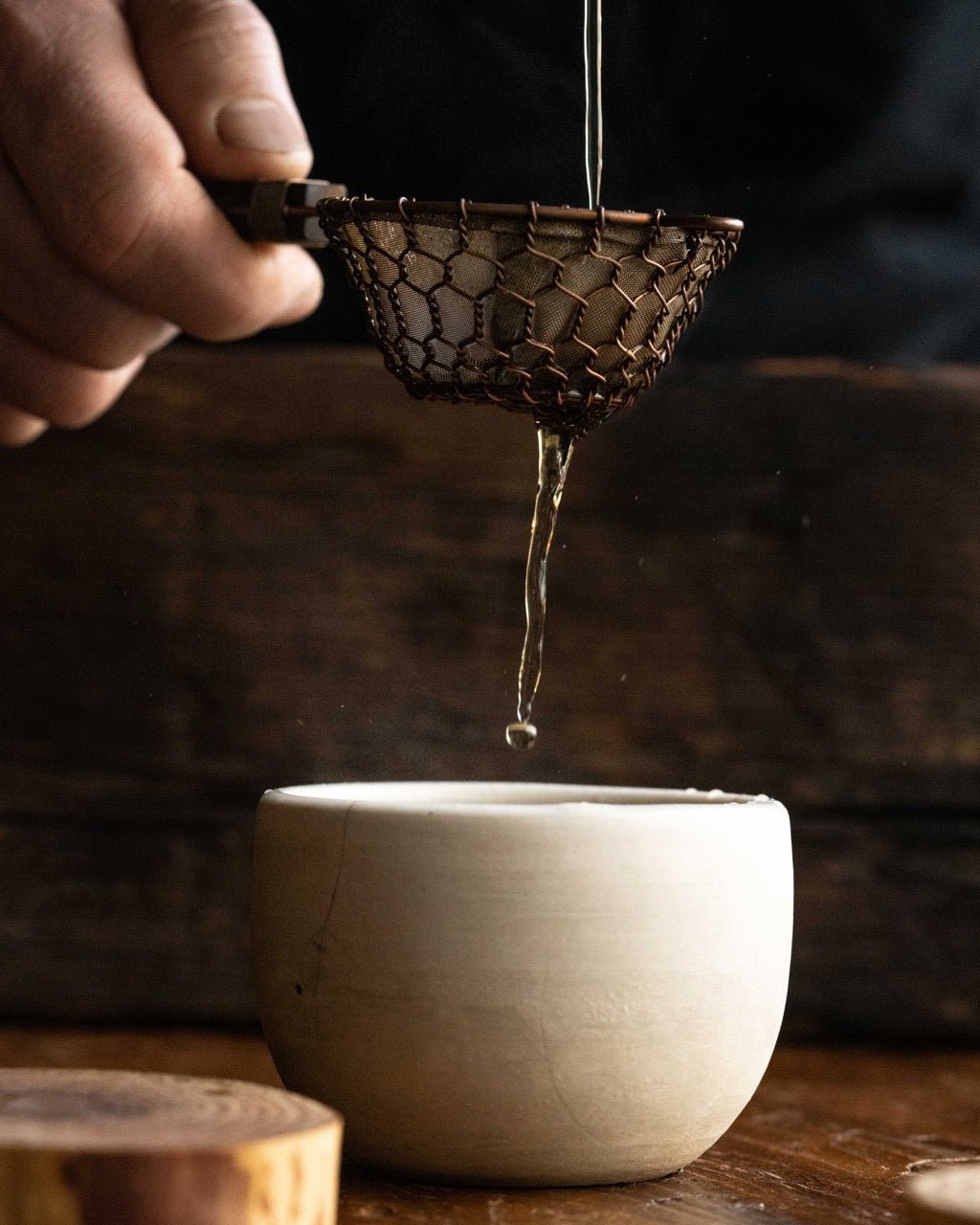What is Green Tea? How is green tea made?

The basic of the basic when it comes to tea is the key distinction between oxidation and fermentation. Let us establish clearly these two terms, so we can understand what is next to come.
Oxidation
Picture an apple. Recently sliced, the apple is white. After a few minutes, the apple is brown. This is a chemical reaction of the apple with the air. If you want to be technical, the atoms in the apple are losing electrons (i.e. increasing the state of oxidation).
Fermentation.
Going back to the apple. If yeast works on this apple, it is transformed into a different thing: cider. This a metabolic process, where bacteria or yeast change the chemical nature of food.
These two processes add different taste profiles, colour, and complexity to each tea, even when they are made from the same plant!
Now, for this first lesson, I have selected Japanese-style green tea because I think easy to understand, and widely popular (like that tea they give you and sushi places!). Let us begin!
Types of Green Tea
There are a bunch of types of tea, but we are starting with Green Japanese-style tea, for it is one of the most popular ones. They are divided into three categories: unfermented, semi-fermented, and fully fermented. I have included the name of the specific teas in each category, so next time you are buying tea, you know exactly what kind of flavour profile you are looking for!
Unfermented
Covered Tea
- Tencha and Maccha: This kind of tea is grown under a cover to avoid direct sunlight and it is steamed and dried without being kneaded. It is very fragrant and has a rich Umami taste. Maccha is Tencha grounded by a tea millstone
- Gyokuro: This kind of tea is grown under a cover to avoid direct sunlight for more than 20 days to make soft, dark green lead buds. The new buds are steamed and kneaded as they are dried. It has a very rich, full flavour and mild Umami taste. This tea is graded as the finest quality and has a vivid green colour
- Kabusecha: This kind of tea is grown undercover for more than 14 days. The new buds are steamed and kneaded as they are dried. This tea has both the freshness of Sencha and the richness of Guyokuro
Uncovered tea
- Sencha: Grown under sunlight without a cover. The new buds are steamed and kneaded as they are dried. It has an outstanding taste with a refreshing fragrance and a hint of refined astringency. This is the most commonly drank tea in Japan
- Kawayanagi: A kind of Bancha tea made of large, thick gree tealeaves selected from Sencha leaves. This tea has a very light taste.
- Hojicha: Kawayanagi or Sencha that has been roasted to bring out a pleasant aroma
- Genmaicha: Kawayanagi and Sencha with roasted brown rice
- Kyobancha: Made from leaves picked after the first harvest of new buds, this tea is roasted after being steamed but not kneaded. The shape of the leaves and stems remain, and it has a very unique flavour.
- Tamaryokucha: There are two kinds of Tamaryokucha
- Roasted in an iron pan
- Steamed and made into balls like Sencha Also known as Guricha
Semi-fermented
- Oolongcha: Tea leaves are semi-fermented and then roasted to stop the fermentation. This tea has an excellent fragrance and is mainly produced in China and Taiwan
Fully fermented tea
- Black tea: the leaves are fully fermented and then dried. The brewed tea is reddish-amber coloured and very aromatic.
Recap of the lesson: teas are named after their process of creation, and this tradition has been carried over centuries. The careful, thoughtful process of fermentation, oxidation, or shading the leaves creates a completely different flavour, appearance and tea colour! And the most impressive thing of them all: it all comes from the same kind of plant.



Comments